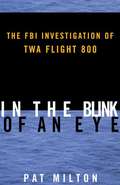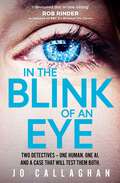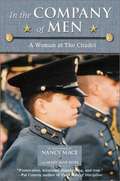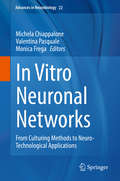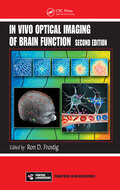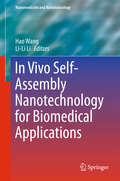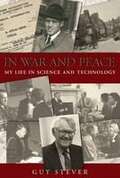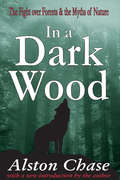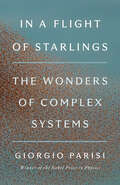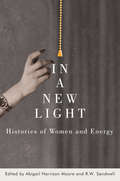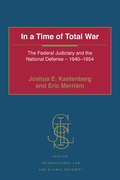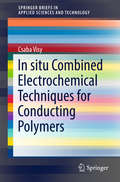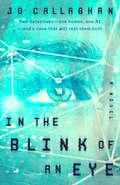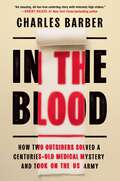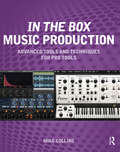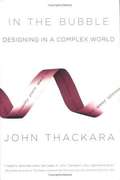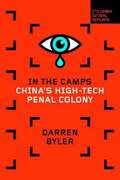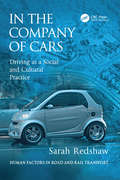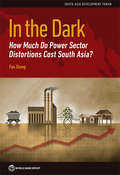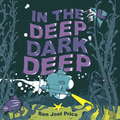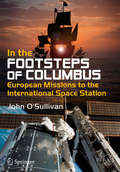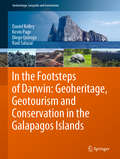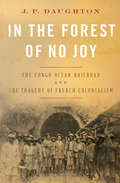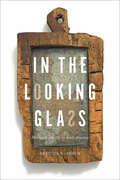- Table View
- List View
In The Blink Of An Eye
by Pat MiltonOne man's battle to get his life back after locked-in stroke left him totally paralysed.Peter Coghlan is an ordinary bloke whose life is transformed, for the second time, after a knock to the head. So begins an extraordinary story of recovery. Peter takes the reader on a journey that will appeal to those who can relate to Peter's circumstances as well as those wanting to understand what it means to be 'Locked-in', what it takes to break free and how to build a new life. A story told in two parts, it is (at times) uncomfortable, drawing the reader into a reality where what happens is not in his control; but Peter's easy dialogue, honesty and irrepressible humour make that journey very well worth taking with him. Be prepared to laugh, cringe and cry. His story offers some answers, but also raises many questions about the obstacles to overcome and what 'success' can look and feel like, as well as shining a light on how society can view people with disabilities. Despite many setbacks and difficulties, at the heart of this story is an acknowledgement of the sacrifices he and others made, with a deep appreciation of the love, care and professionalism shown by those helping him along the way to becoming Peter Coghlan - reborn.
In The Blink of An Eye: Winner of the Theakstons Crime Novel of the Year and the CWA New Blood Dagger
by Jo CallaghanTHE SUNDAY TIMES bestseller, as seen on BBC 2's BETWEEN THE COVERS A WATERSTONES THRILLER BOOK OF THE MONTH *WINNER* OF THE THEAKSTON OLD PECULIER CRIME NOVEL OF THE YEAR 2024 *WINNER* OF THE CRIME WRITERS' ASSOCIATION ILP JOHN CREASEY (NEW BLOOD) DAGGER 2024 AND NOMINATED FOR TWO OTHER MAJOR AWARDS Capital Crime Book of the Year 2023 Crimefest Specsavers Best Debut Crime Novel &‘I devoured this in one sitting&’ Rob Rinder, as featured on BBC 2&’s Between the Covers&‘Terrifyingly timely and provocative' Val McDermid'The most original crime novel you'll read this year' Clare Mackintosh In the UK, someone is reported missing every 90 seconds. Just gone. Vanished. In the blink of an eye. DCS Kat Frank knows all about loss. A widowed single mother, Kat is a cop who trusts her instincts. Picked to lead a pilot programme that has her paired with AIDE (Artificially Intelligent Detective Entity) Lock, Kat's instincts come up against Lock's logic. But when the two missing person's cold cases they are reviewing suddenly become active, Lock is the only one who can help Kat when the case gets personal. AI versus human experience. Logic versus instinct. With lives on the line can the pair work together before someone else becomes another statistic? In the Blink of an Eye is a dazzling debut from an exciting new voice and asks us what we think it means to be human. 'Just brilliant!' Lisa Jewell 'Has to be a strong contender for crime debut of the year - sharp, perceptive writing and a brilliant new take on the detective duo' T. M. Logan'Everything you could hope for in a thriller: heartbreaking, intelligent, deftly plotted and so original' Fiona Cummins'Jo Callaghan makes her entry into the crowded police procedural genre with a fresh take on the buddy-buddy cop trope . . . Provocative and compelling' Vaseem Khan 'The kind of fresh and fearless debut I just adore. Wildly original, heartfelt, funny, and properly thrilling. Take a bow, Jo Callaghan' Chris Whitaker
In The Company Of Men: A Woman At The Citadel
by Mary Jane Ross Nancy Mace"Leaning forward until I could feel his breath on the back of my neck he began to rack me in an insidious, threatening manner. 'We all hate you. When are you going to leave? We hate you, do you hear me?'...On and on the voice went, and for the first time since I had come to the school, I was afraid, afraid and disgusted."<P> When Nancy Mace entered The Citadel, the United States government had just recently overturned the ruling that women were not allowed to enter the "Core of Cadets." Having grown up in a military family, Nancy was not unfamiliar with the harsh realities of military life. Her father, a brigadier general, had graduated from The Citadel and her older sister was a military graduate, but it would be Nancy's journey alone. And as many a knob has found out, life inside the dazzling white ramparts of this famous fortress is far from pleasant. Upon entering those grand gates, Nancy Mace soon found out that she wasn't just fighting the tradition of the corps, but the culture and city that surrounded it. Steeped in tradition and lore, the grand bastion known as El Cid is considered one of the South's most infamous and controversial institutions. Built in 1842, it has turned out a unique brand of Southern man -- and now woman. This is the true first-person account of a young woman's battle to be a part of the long gray line.
In Vitro Neuronal Networks: From Culturing Methods to Neuro-Technological Applications (Advances in Neurobiology #22)
by Monica Frega Michela Chiappalone Valentina PasqualeThis book provides a comprehensive overview of the incredible advances achieved in the study of in vitro neuronal networks for use in basic and applied research. These cultures of dissociated neurons offer a perfect trade-off between complex experimental models and theoretical modeling approaches giving new opportunities for experimental design but also providing new challenges in data management and interpretation. Topics include culturing methodologies, neuroengineering techniques, stem cell derived neuronal networks, techniques for measuring network activity, and recent improvements in large-scale data analysis. The book ends with a series of case studies examining potential applications of these technologies.
In Vivo Optical Imaging of Brain Function
by Ron D. FrostigThese are exciting times for the field of optical imaging of brain function. Rapid developments in theory and technology continue to considerably advance understanding of brain function. Reflecting changes in the field during the past five years, the second edition of In Vivo Optical Imaging of Brain Function describes state-of-the-art techniques a
In Vivo Self-Assembly Nanotechnology for Biomedical Applications
by Hao Wang Li-Li LiThis book reviews and discusses the development of self-assembled nanomaterials applied in biomedical fields. Based on self-assembled nanomaterial constructions, it highlights the mechanisms of the stimuli-response-induced assembly/disassembly and transformation. Moreover, it examines healthcare-related diseases, the applications of nanomaterials and therapy/detection strategies, providing readers with both a deeper understanding of the subject and inspirations for future research. The book is primarily intended for researchers and graduate students in the fields of material sciences and chemistry who wish to learn about the principles, methods, mechanisms and biomedical applications of self-assembled nanomaterials.
In War And Peace: My Life In Science And Technology
by Guy SteverScience came into Guy Stever’s life as a pure and peaceful pursuit. It was only later, as he walked through the wreckage of wartime London that he began to see science as central to a desperate struggle to survive.Past president of Carnegie Mellon University, former Chief Scientist of the U.S. Air Force, one-time Director of the National Science Foundation, professor at MIT for 20 years, member of the National Academies of Sciences and Engineering, and science advisor to two presidents…Guy Stever was a central figure in twentieth century science—consistently on the front lines, changing the fate of a nation.In this thoughtful and candid memoir, Stever recounts an extraordinary life that reveals as much about the man as about the major scientific and technological events of his day. Born of humble origins and orphaned at an early age, Stever journeyed from a small town in New York to work alongside British comrades who were developing and refining the critical radar technology that was to turn the tide of the war against the Germans. As a technical intelligence officer, these harrowing wartime years took him from the beachheads of Normandy to the German slave-labor factories responsible for building the V-2 rockets.Stever returned home committed to serving his country. He became intimately involved in America’s nascent guided missile program—and was to remain a key player in the anti-ballistic missile defense program that heralded the era of the Cold War. As the decades passed, Stever continued to exert lasting influence on countless scientific endeavors. He was instrumental in the formation of new institutions, from the creation of NASA in the post-Sputnik years to the merging of Carnegie Tech and the Mellon Institution, giving birth to Carnegie Mellon University. As Presidential Science Advisor to both Nixon and Ford, Stever shaped the very structure of contemporary presidential science advising. And he was to chair the oversight committee that redesigned the space shuttle boosters after the Challenger explosion.Guy Stever’s life offers remarkable insight into the twentieth century. Through his eyes, we relive the history of the past 50 years, witnesses to a tale of science and technology that is revealing in its scope and sweep.
In a Dark Wood: A Critical History of the Fight Over Forests
by Alston ChaseIn a Dark Wood presents a history of debates among ecologists over what constitutes good forestry, and a critique of the ecological reasoning behind contemporary strategies of preservation, including the Endangered Species Act. Chase argues that these strategies, in many instances adopted for political, rather than scientific reasons, fail to promote biological diversity and may actually harm more creatures than they help. At the same time, Chase offers examples of conservation strategies that work, but which are deemed politically incorrect and ignored.In a Dark Wood provides the most thoughtful and complete account yet written of radical environmentalism. And it challenges the fundamental—but largely unexamined—assumptions of preservationism, such as those concerning whether there is a "balance of nature," whether all branches of ecology are really science, and whether ecosystems exist. In his new introduction, Chase evaluates the response to his book and reports on recent developments in environmental science, policy, and politics.In a Dark Wood was judged by a recent national poll to be one of the one hundred best nonfiction books written in the English language during the twentieth century. A smashing good read, this book will be of interest to environmentalists, ecologists, philosophers, biologists, and bio-ethicists, and anyone concerned about ecological issues.
In a Flight of Starlings: The Wonders of Complex Systems
by Giorgio ParisiFrom the 2021 Nobel Prize winner in Physics, an enlightening and personal journey into the practice of groundbreaking science &“[Giorgio Parisi is] an extraordinary scientist.&” —Carlo RovelliWith In a Flight of Starlings, celebrated physicist Giorgio Parisi guides us through his unorthodox yet exhilarating work, starting with investigating the principles of physics by observing the flight of flocks of birds. Studying the movements of these communities, he has realized, proves an illuminating way into understanding complex systems of all kinds—collections of everything from atoms and planets to other animals, such as ourselves.Along the way, he reflects on the lessons he has taken from a life in pursuit of scientific truth: the importance of serendipity to the discovery of new ideas, the surprising kinship between physics and other disciplines, and the value of science to a thriving society. In so doing, he removes the practice of science from the confines of the laboratory and brings it into the real world.Part elegant scientific treatise, part thrilling journey of discovery, In a Flight of Starlings is an invitation to find wonder in the world around us.
In a New Light: Histories of Women and Energy
by Abigail Harrison Moore and R.W. SandwellIn the early 1970s, a German study estimated that women expended as many calories cleaning their coal-mining husbands' work clothes as their husbands did working below ground, arguably making the home as much a site of industrialized work as factories and mines. But while energy studies are beginning to acknowledge the importance of social and historical contexts and to produce more inclusive histories of the unprecedented energy transitions that powered industrialization, women have remained notably absent from these accounts.In a New Light explores the vital place of women in the shift to fossil fuels that spurred the Industrial Revolution, illuminating the variety of ways in which gender and energy intersected in women's lives in nineteenth- and twentieth-century Europe and North America. From their labour in the home, where they managed the adoption of new energy sources, to their work as educators in electrical housecraft and their protests against the effects of industrialization, women took on active roles to influence energy decisions.Together these essays deepen our understanding of the significance of gender in the history of energy, and of energy transitions in the history of women and gender. By foregrounding women's energetic labours and concerns, the authors shed new light on energy use in the past and provide important insights as societies move towards a carbon-neutral future.
In a Time of Total War: The Federal Judiciary and the National Defense - 1940-1954 (Justice, International Law and Global Security)
by Joshua E. Kastenberg Eric MerriamThis book is a judicial, military and political history of the period 1941 to 1954. As such, it is also a United States legal history of both World War II and the early Cold War. Civil liberties, mass conscription, expanded military jurisdiction, property rights, labor relations, and war crimes arising from the conflict were all issues to come before the federal judiciary during this period and well beyond since the Supreme Court and the lower courts heard appeals from the government’s wartime decisions well into the 1970s. A detailed study of the judiciary during World War II evidences that while the majority of the justices and judges determined appeals partly on the basis of enabling a large, disciplined, and reliable military to either deter or fight a third world war, there was a recognition of the existence of a tension between civil rights and liberties on the one side and military necessity on the other. While the majority of the judiciary tilted toward national security and deference to the military establishment, the judiciary’s recognition of this tension created a foundation for persons to challenge governmental narrowing of civil and individual rights after 1954. Kastenberg and Merriam present a clearer picture as to why the Court and the lower courts determined the issues before them in terms of external influences from both national and world-wide events. This book is also a study of civil-military relations in wartime so whilst legal scholars will find this study captivating, so will military and political historians, as well as political scientists and national security policy makers.
In situ Combined Electrochemical Techniques for Conducting Polymers
by Csaba VisyThis book outlines methods to improve functioning of these polymer based devices - in particular, the multi-faceted cognition of these materials. In situ electrochemical techniques are studied to elucidate redox switching between non-conducting and conducting states. The book examines the advantages of combinations of in situ electrochemical techniques in a hyphenated mode for analyzing conducting polymers.
In the Blink of an Eye: A Novel
by Jo CallaghanSUNDAY TIMES BESTSELLER • Two detectives: one human, one AI. And a case that will test them both.&“Wildly original, heartfelt, funny, and properly thrilling, this is the kind of fresh and fearless debut I just adore.&”—Chris Whitaker, author of All the Colors of the Dark, a Read with Jenna Book Club PickWinner of the Crime Writers&’ Association&’s John Creasy New Blood Dagger Award and the Theakston Old Peculier Crime Novel of the YearKat Frank knows all about loss. A widowed single mother, Kat is a cop who trusts her intuition, honed through years of on-the-beat police work. Picked to lead a pilot program that has her paired with Lock, an AIDE (Artificially Intelligent Detective Entity)—a hologram that is activated by a device on Kat&’s wrist—Kat&’s gut reactions about people and motives come up against Lock&’s statistical calculations and data analysis that can be devised in seconds.But as the two missing person&’s cold cases they are reviewing suddenly become active, Lock is the only one who can help when the case begins to target Kat personally. AI versus human experience. Logic versus instinct. With lives on the line, can the pair work together to solve the mystery in time?A dazzling debut from an exciting new voice, In the Blink of an Eye asks us what we think it means to be human. NOMINATED: Capital Crime&’s Overall Crime Book of the Year; Crimefest&’s Specsavers Debut Crime Novel Award
In the Blood: How Two Outsiders Solved a Centuries-Old Medical Mystery and Took On the US Army
by Charles BarberThe "high-stakes" true story of how an absent-minded inventor and a down-on-his-luck salesman joined forces to create a once‑in‑a‑generation lifesaving product: "Suspenseful storytelling helps us see and feel the struggle and frustration, the sweat and tears . . . Inspiring&” (Robert Kolker, #1 New York Times bestselling author of Hidden Valley Road). At the 1993 Battle of Mogadishu, dramatized by the popular film Black Hawk Down, the majority of soldiers who died were killed instantly or bled to death before they could reach an operating table. This tragedy reinforced the need for a revolutionary treatment that could transform trauma medicine. So, when Frank Hursey and Bart Gullong—who had no medical or military experience—discovered that a cheap, crushed rock called zeolite had blood‑clotting properties, they brought it to the military's attention. The Marines and the Navy adopted the resulting product, QuikClot, immediately. The Army, however, resisted. It had two products of its own being developed to prevent excessive bleeds, one of which had already cost tens of millions of dollars. The other, "Factor Seven," had a more dangerous complication: its side effects could be deadly. Unwilling to let its efforts end in failure—and led by the highly influential surgeon Colonel John Holcomb—the Army set out to smear QuikClot&’s reputation. Over the course of six years, Hursey and Gullong engaged in an epic struggle with Holcomb for recognition. Ultimately, a whistle‑blower inside the Army challenged the Army&’s embrace of Factor Seven, which resulted in a massive lawsuit led by the U.S. Department of Justice. The lawsuit focused further attention on the financial ties between the pharmaceutical company that produced Factor Seven and Holcomb&’s research institute. By withholding QuikClot—which later became the medical miracle of the Iraq War—and in the use of Factor Seven with its known, life-threatening risks of heart attacks and strokes, the lives of countless soldiers were imperiled. Using deep reportage and riveting prose, In the Blood recounts this little‑known David‑and‑Goliath story of corruption, greed, and power within the military—and the devastating consequences of unchecked institutional arrogance.
In the Box Music Production: Advanced Tools And Techniques For Pro Tools
by Mike CollinsSure, you can import and mix a track in Pro Tools. You can work with MIDI and you know your way around the Edit window. The UI is as familiar as your most broken-in pair of jeans. We get it—you don’t need another button-pushing guide starting from the ground floor. Get uniquely in-depth coverage instead with In the Box Music Production: Advanced Tools and Techniques for Pro Tools. Author Mike Collins splits the book into three distinct sections covering how you use Pro Tools now—whether you’re working with the synths and samplers or loops and beats of a dance or hip-hop project, the soaring vocals of the next pop sensation, or the lush layers of an instrumental world music track. Use Pro Tools to its full potential with advice on studio techniques and full exploration of its internal capabilities. Learn to leverage Pro Tools and make it work for you with this guide that is fully grounded in real-world applications and process. This book assumes that the user has some music production experience and has worked through the basics in Pro Tools.
In the Bubble: Designing in a Complex World
by John ThackaraWe're filling up the world with technology and devices, but we've lost sight of an important question: What is this stuff for? What value does it add to our lives? So asks author John Thackara in his new book, In the Bubble: Designing for a Complex World. These are tough questions for the pushers of technology to answer. Our economic system is centered on technology, so it would be no small matter if "tech" ceased to be an end-in-itself in our daily lives. Technology is not going to go away, but the time to discuss the end it will serve is before we deploy it, not after. We need to ask what purpose will be served by the broadband communications, smart materials, wearable computing, and connected appliances that we're unleashing upon the world. We need to ask what impact all this stuff will have on our daily lives. Who will look after it, and how? In the Bubble is about a world based less on stuff and more on people. Thackara describes a transformation that is taking place now--not in a remote science fiction future; it's not about, as he puts it, "the schlock of the new" but about radical innovation already emerging in daily life. We are regaining respect for what people can do that technology can't. In the Bubble describes services designed to help people carry out daily activities in new ways. Many of these services involve technology--ranging from body implants to wide-bodied jets. But objects and systems play a supporting role in a people-centered world. The design focus is on services, not things. And new principles--above all, lightness--inform the way these services are designed and used. At the heart of In the Bubble is a belief, informed by a wealth of real-world examples, that ethics and responsibility can inform design decisions without impeding social and technical innovation.
In the Camps: China's High-Tech Penal Colony
by Darren BylerHow China used a network of surveillance to intern over a million people and produce a system of control previously unknown in human history. <p><p> Novel forms of state violence and colonization have been unfolding for years in China's vast northwestern region, where more than a million and a half Uyghurs and others have vanished into internment camps and associated factories. <p><p>Based on hours of interviews with camp survivors and workers, thousands of government documents, and over a decade of research, Darren Byler, one of the leading experts on Uyghur society and Chinese surveillance systems, uncovers how a vast network of technology provided by private companies—facial surveillance, voice recognition, smartphone data—enabled the state and corporations to blacklist millions of Uyghurs because of their religious and cultural practice starting in 2017. Charged with "pre-crimes" that sometimes consist only of installing social media apps, detainees were put in camps to "study"—forced to praise the Chinese government, renounce Islam, disavow families, and labor in factories. <p><p>Byler travels back to Xinjiang to reveal how the convenience of smartphones have doomed the Uyghurs to catastrophe, and makes the case that the technology is being used all over the world, sold by tech companies from Beijing to Seattle producing new forms of unfreedom for vulnerable people around the world.
In the Company of Cars: Driving as a Social and Cultural Practice (Human Factors in Road and Rail Transport)
by Sarah RedshawIt has long been accepted that the social and cultural meanings of the car far exceed the practical need for mobility. This book marks the first attempt to contribute to road safety, considering, in depth, these meanings and the cultures of driving that are shaped by them. In the Company of Cars examines the perspectives that young people have on cars, and explores the broader social and cultural meanings of the car, the potential it is supposed to fulfil, and the anticipated benefits it offers to young drivers. From focus-group research conducted in Australia, the book takes up the views of young people on a range of topics, from media to car use to gender performance. The author looks at the ways in which driving has been defined by articulations of the car that emphasize valued features of the car-driver, such as gender, youthfulness, status, age, power, raciness, sexiness, ruggedness and competitiveness. The book takes a global perspective on mobility, considering the impact of cars and road safety policy on quality of life, and the value and significance of other modes of travel, in a range of countries.
In the Dark: How Much Do Power Sector Distortions Cost South Asia? (South Asia Development Forum Ser.)
by Fan ZhangElectricity shortages are among the biggest barriers to South Asia’s development. Some 255 million people—more than a quarter of the world’s off-grid population—live in South Asia, and millions of households and firms that are connected experience frequent and long hours of blackouts. Inefficiencies originating in every link of the electricity supply chain contribute significantly to the power deficit. Three types of distortions lead to most of the inefficiencies: institutional distortions caused by state ownership and weak governance; regulatory distortions resulting from price regulation, subsidies, and cross-subsidies; and social distortions (externalities) causing excessive environmental and health damages from energy use. <P><P> Using a common analytical framework and covering all stages of power supply, In the Dark identifies and estimates how policy-induced distortions have affected South Asian economies. The book introduces two innovations. First, it goes beyond fiscal costs, evaluating the impact of distortions from a welfare perspective by measuring the impact on consumer wellbeing, producer surplus, and environmental costs. And second, the book adopts a broader definition of the sector that covers the entire power supply chain, including upstream fuel supply and downstream access and reliability. <P><P> The book finds that the full cost of distortions in the power sector is far greater than previously estimated based on fiscal cost alone: The estimated total economic cost is 4†“7 percent of the gross domestic product in Bangladesh, India, and Pakistan. Some of the largest costs are upstream and downstream. Few other reforms could quickly yield the huge economic gains that power sector reform would produce. By expanding access to electricity and improving the quality of supply, power sector reform would also directly benefit poor households. The highest payoffs are likely to come from institutional reforms, expansion of reliable access, and the appropriate pricing of carbon and local air pollution emissions.
In the Deep Dark Deep
by Ben Joel PriceIn this sequel to Earth Space Moon Base, Monkey, Robot, and Deep-Sea Diver embark on a dangerous underwater quest! The jellyfish and spider crabs they encounter are the least of their worries as they search the depths for missing starfish in their bathysphere, the Guppy. Ben Joel Price's cheeky rhymes and limited yet striking palette evoke an enchanting world that will give young readers the explorer's bug!
In the Footsteps of Columbus
by John O'SullivanThe European Space Agency has a long history of human spaceflight, flying in space with both NASA and the Soviet/Russian space agencies over the years. This book tells the story of the ESA astronauts who have visited the International Space Station over its first decade and how they have lived on board, helped construct the space laboratory and performed valuable scientific experiments. ESA has contributed the Columbus science laboratory as well as the Copula, the Leonardo PMM and the ATV supply ship to the station's infrastructure but it is the human endeavor that captures the imagination. From brief visits to six month expeditions, from spacewalking to commanding the Earth's only outpost in space, ESA astronauts have played a vital role in the international project. Extensive use of color photographs from NASA and ESA depicting the experiments carried out, the phases of the ISS construction and the personal stories of the astronauts in space highlights the crucial European work on human spaceflight.
In the Footsteps of Darwin: Geoheritage, Geotourism and Conservation in the Galapagos Islands (Geoheritage, Geoparks and Geotourism)
by Kevin Page Diego Quiroga Daniel Kelley Raul SalazarThis book provides the first-ever overview of and guide to the geological setting and related features of the famous, volcanically active Galapagos Islands, as well as an in-depth analysis of the setting’s relationship to the region’s unique and iconic ecology, and its conservation. Further, it provides an introduction to human settlement and activity on the islands, including the transition from subsistence to a fishing economy and more recently tourism, all in the context of increasingly restrictive conservation regulations. Importantly, the book also explores the development of the concept and practice of sustainable development across the islands as a framework for future economic development, pursuing an approach that reconciles the needs of the resident population with conservation of this fragile environment.The book is intended for a broad readership, from those engaged in geological and ecological studies, college and university educators and conservation practitioners, to more general visitors to the islands.
In the Forest of No Joy: The Congo-océan Railroad And The Tragedy Of French Colonialism
by J. P. DaughtonThe epic story of the Congo-Océan railroad and the human costs and contradictions of modern empire. The Congo-Océan railroad stretches across the Republic of Congo from Brazzaville to the Atlantic port of Pointe-Noir. It was completed in 1934, when Equatorial Africa was a French colony, and it stands as one of the deadliest construction projects in history. Colonial workers were subjects of an ostensibly democratic nation whose motto read “Liberty, Equality, Fraternity,” but liberal ideals were savaged by a cruelly indifferent administrative state. African workers were forcibly conscripted and separated from their families, and subjected to hellish conditions as they hacked their way through dense tropical foliage—a “forest of no joy”; excavated by hand thousands of tons of earth in order to lay down track; blasted their way through rock to construct tunnels; or risked their lives building bridges over otherwise impassable rivers. In the process, they suffered disease, malnutrition, and rampant physical abuse, likely resulting in at least 20,000 deaths. In the Forest of No Joy captures in vivid detail the experiences of the men, women, and children who toiled on the railroad, and forces a reassessment of the moral relationship between modern industrialized empires and what could be called global humanitarian impulses—the desire to improve the lives of people outside of Europe. Drawing on exhaustive research in French and Congolese archives, a chilling documentary record, and heartbreaking photographic evidence, J.P. Daughton tells the epic story of the Congo-Océan railroad, and in doing so reveals the human costs and contradictions of modern empire.
In the Looking Glass: Mirrors & Identity in Early America
by Rebecca K. Shrum“[An] utterly fascinating reading of the multiple uses and meanings of mirrors among European Americans, African Americans, and Native Americans.” —Journal of Social HistoryWhat did it mean, Rebecca K. Shrum asks, for people—long-accustomed to associating reflective surfaces with ritual and magic—to became as familiar with how they looked as they were with the appearance of other people? Fragmentary histories tantalize us with how early Americans—people of Native, European, and African descent—interacted with mirrors.Shrum argues that mirrors became objects through which white men asserted their claims to modernity, emphasizing mirrors as fulcrums of truth that enabled them to know and master themselves and their world. In claiming that mirrors revealed and substantiated their own enlightenment and rationality, white men sought to differentiate how they used mirrors from not only white women but also from Native Americans and African Americans, who had long claimed ownership of and the right to determine the meaning of mirrors for themselves. Mirrors thus played an important role in the construction of early American racial and gender hierarchies.Drawing from archival research, as well as archaeological studies, probate inventories, trade records, and visual sources, Shrum also assesses extant mirrors in museum collections through a material culture lens. Focusing on how mirrors were acquired in America and by whom, as well as the profound influence mirrors had, both individually and collectively, on the groups that embraced them, In the Looking Glass is a piece of innovative textual and visual scholarship.“A superb reflection of the many meanings held by an object usually taken for granted. Highly recommended.” —Choice
In the Looking Glass: Mirrors and Identity in Early America
by Rebecca K. ShrumHow mirrors shaped human identity in North America from the earliest European explorations.What did it mean, Rebecca K. Shrum asks, for people—long-accustomed to associating reflective surfaces with ritual and magic—to became as familiar with how they looked as they were with the appearance of other people? Fragmentary histories tantalize us with how early Americans—people of Native, European, and African descent—interacted with mirrors. Shrum argues that mirrors became objects through which white men asserted their claims to modernity, emphasizing mirrors as fulcrums of truth that enabled them to know and master themselves and their world. In claiming that mirrors revealed and substantiated their own enlightenment and rationality, white men sought to differentiate how they used mirrors from not only white women but also from Native Americans and African Americans, who had long claimed ownership of and the right to determine the meaning of mirrors for themselves. Mirrors thus played an important role in the construction of early American racial and gender hierarchies. Drawing from archival research, as well as archaeological studies, probate inventories, trade records, and visual sources, Shrum also assesses extant mirrors in museum collections through a material culture lens. Focusing on how mirrors were acquired in America and by whom, as well as the profound influence mirrors had, both individually and collectively, on the groups that embraced them, In the Looking Glass is a piece of innovative textual and visual scholarship.
